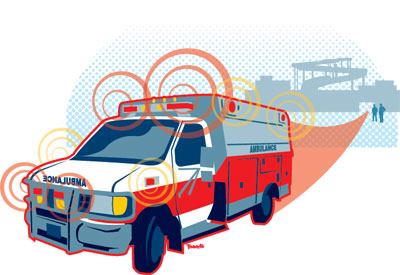THE LESSONS
1. Never let your guard down. As the season winds down, the staff tends to relax a bit as fewer patrons visit the facility. Always remember: An incident can happen whether one or 1,000 people are at the pool.
2. Do in-service training until the last day. The day before our lifeguards used their CPR skills to save the life of the young swimmer, they had performed their regular rounds of in-service training on the pool deck. Even up to the last day, this training is imperative because you never know what might happen.
3. Make sure everyone knows your Emergency Action Plan. Not once during this situation did someone ask what needed to be done, or had to be told what to do. Everyone — from the lifeguards, to the park rangers, to the facility managers and the labor staff — knew how to react and what role they were to play in an emergency situation.
4. Have confidence in your staff. When the EAP was activated and I saw lifeguards performing CPR, I had confidence that the situation would turn out favorably. Between the orientations we’d had and the in-service training, I had complete faith in what the staff could accomplish.
Note: If you’d like to share a story, please send it (and the lessons you learned) to gthill@hanleywood.com.
On the 70th day of a 79-day season, what most of us thought was a regular Sunday at Saxon Woods Pool in White Plains, N.Y., turned into a day we would never forget.
As the pool was being cleared for a reported missing child, the youngster was found safe and sound. But we had no time for celebration because at the same time, another young girl was being pulled from the water, unresponsive.
The pool’s Emergency Action Plan (EAP) was activated and the staff immediately responded. Lifeguards, office staff, cashiers, laborers and park rangers went into action. Within seconds, two lifeguards were administering two-person CPR; a seasonal park ranger was calling the Public Safety Department for an ambulance; a facility manager was trying to calm the girl’s mother; laborers were asking patrons to please stay back and helping with crowd control.
Maintenance staff members were opening up our back gate and making sure the ambulance had a clear path to the girl. Other employees made sure patrons stayed out of the water and calm during this situation.
After a few cycles of CPR, the girl was responsive and started to breathe on her own. Another facility manager was now keeping her calm and awake while waiting for the ambulance. Moments later, the ambulance arrived and she was taken to the hospital. We later found out that she was discharged from the hospital that evening.
The EAP was activated without hesitation and everyone followed suit. This unforgettable day is proof that proper training and working together as a team can prevail in even the most stressful circumstance. When faced with a dire situation, everyone came together to help create an outstanding outcome.
